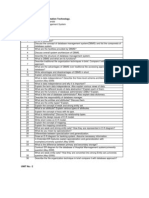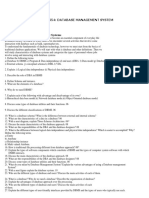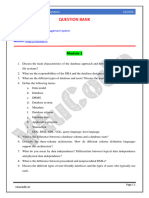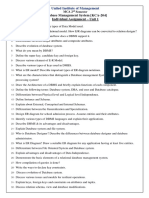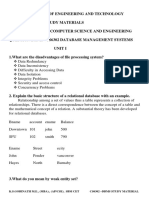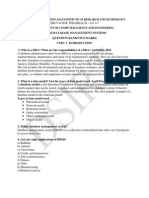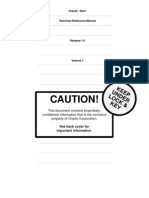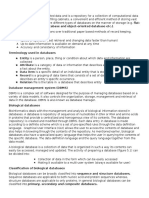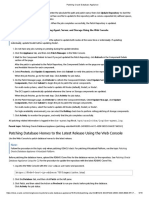LUMBINI ENGINEERING MANAGEMENT AND SCIENCE COLLEGE
(Pokhara University)
ASSIGNMENT
Subject: Database Management System (DBMS) Date: 2080/08/23
Instructions:
Answer all questions.
Provide detailed explanations and examples where necessary.
Submit the assignment by the specified deadline.
1. Discuss the problems in early information processing systems and highlight the role of
database management systems in your own word.
2. What is data independence? Explain the type of data independence.
3. What is schema? Explain the importance of view in database.
4. Draw an ER diagram for a database showing Hospital system. The Hospital maintains
data about Affiliated Hospitals, type of Treatments facilities given at each hospital,
and Patients.
5. What are different types of Database users and their roles?
6. What is data abstraction? Discuss three levels of this abstraction.
7. What are the components of ER diagram? Explain the function of various symbols use
in ER diagram. Construct an ER diagram to store data in a library of your college.
8. How does a view differ with relation? Define the role of view in security.
9. Explain the concept of DDL DML DCL with suitable example of each.
10. Consider the following supplier database, where primary keys are underlined:
�11. Consider the following supplier database, where primary keys are underlined:
Supplier (supplier-id, supplier-name, city)
Supplies (supplier-id, part-id, quantity)
Parts (part-id, part-name, color, weight)
Construct the following relational algebra queries for this relational database
a) Find the name of all supplies located in city "Kathmandu".
b) Find the name of all parts supplied "ABC Company".
c) Find the name of all parts that are supplied in quantity greater than 300.
d) Find the number of parts supplied by "ABC Company'.
e) Find the name of all suppliers who supply more than 30 different parts.
12. Explain about database normalization and its importance. Explain 1NF, 2NF and 3NF
with suitable example.
13. Explain the use of primary and foreign key in DBMS with example. What is the role of
foreign key?
14. Define integrity constraint? Discuss domain constraint, referential integrity with
suitable example.
15. What is join operation? Differentiate between equijoin and natural join with suitable
example.
16. What is a view in SQL and how it is defined? Explain how views are typically
implemented.
17. How does “GROUP BY” clause work? What is the difference between “WHERE” and
“HAVING” clause? Explain with suitable examples.
18. Define Functional dependencies. Explain the types of functional dependencies?
19. Consider the following employee database:
�20. Assume the database about company.
21. Define stored procedure. List the advantages and disadvantages of stored procedure.
Explain how stored procedure are created with example.
22. What do you mean by integrity constraints? Explain assertion and triggers in SQL with
their syntax.
23. What is database anomaly? Explain different types of database anomalies with
suitable examples.
24. Write short notes on:
a. Distributed Database
b. QBE (Query By Example)
c. Data Dictionary
d. Application of Database












